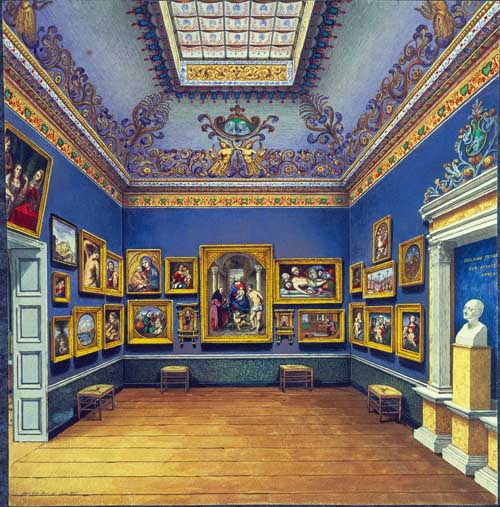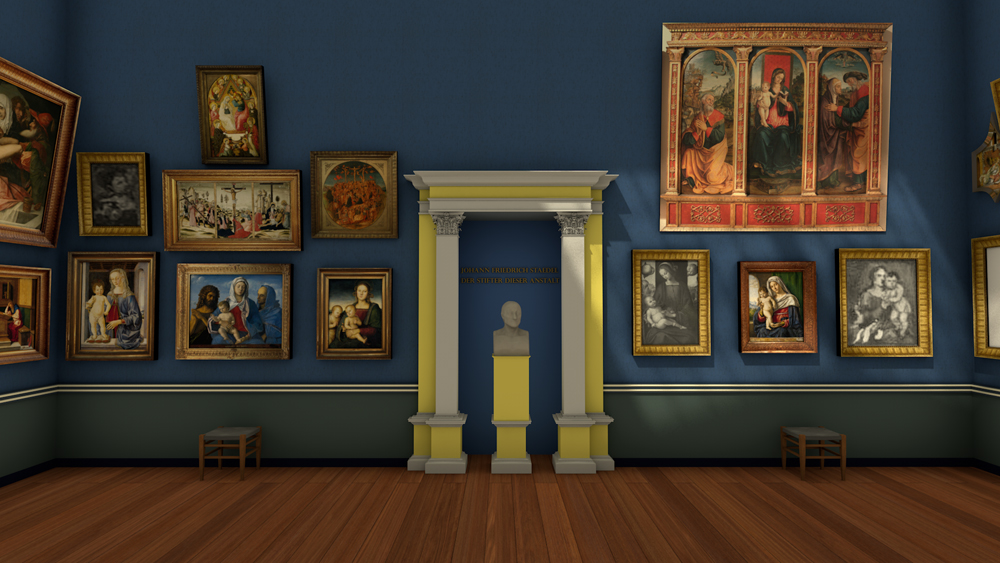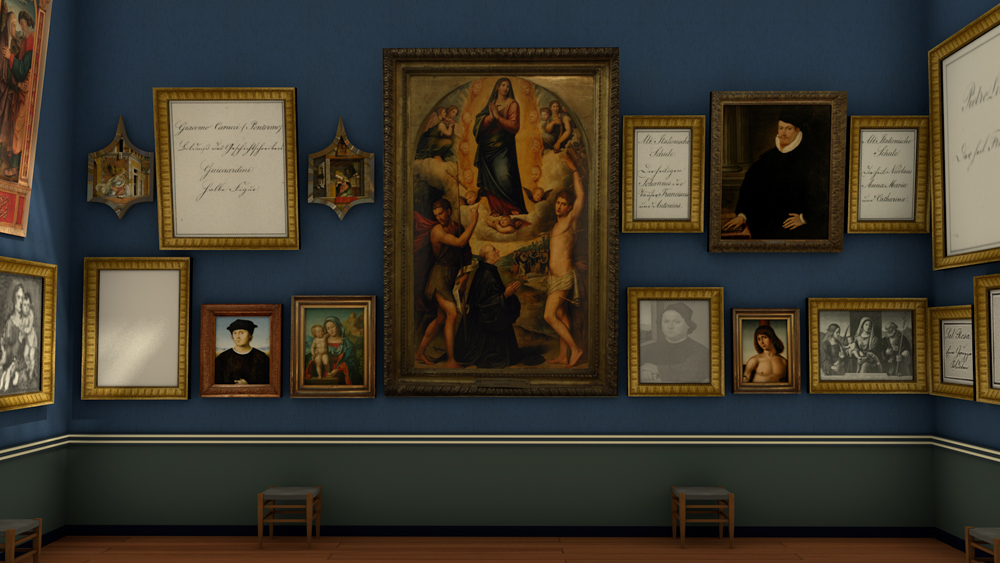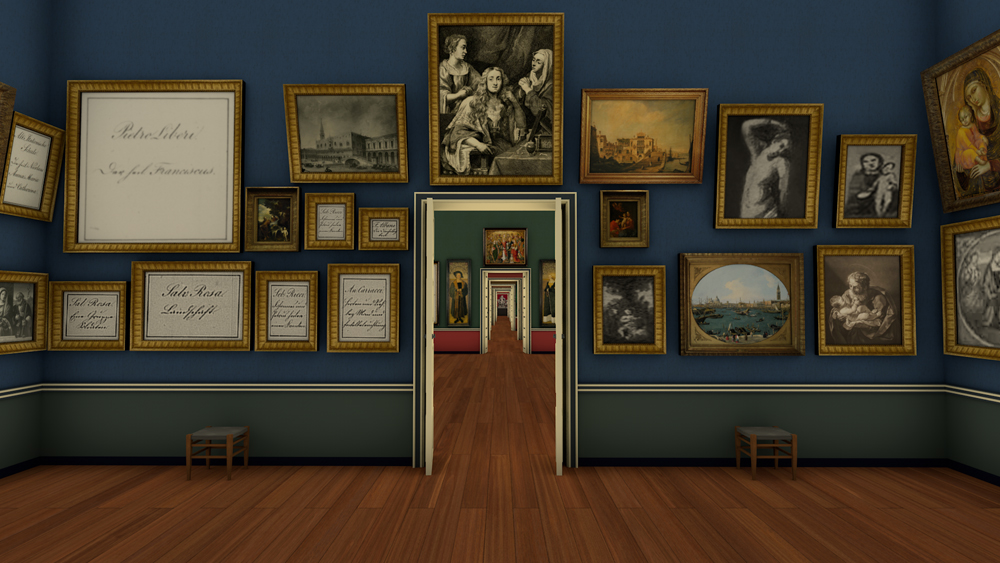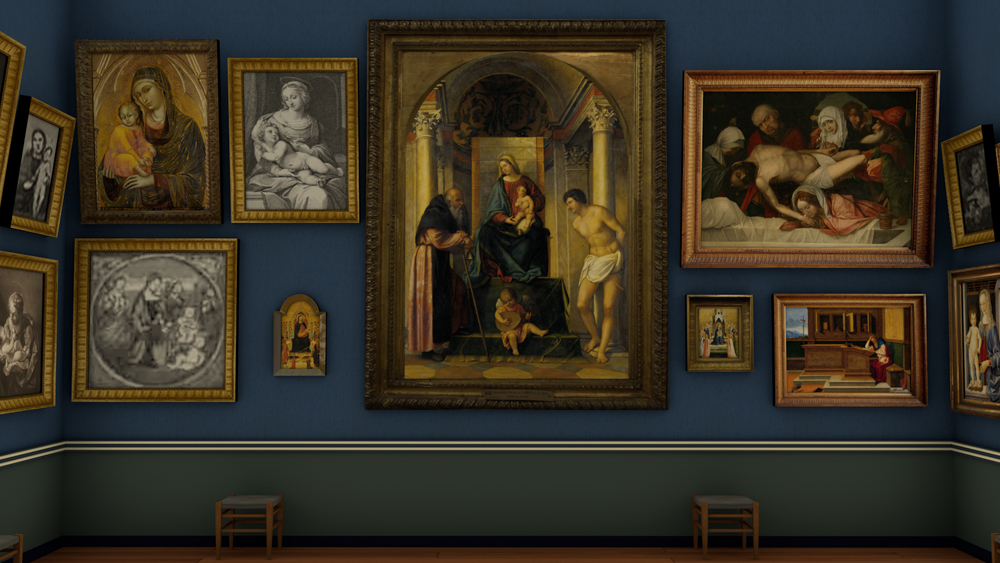1835 Italian room
Radical
change
In the fall of 1833, the Städelsches Kunstinstitut acquired the high-quality painting collection of the Viennese collector and art dealer Nikolaus Baranowsky. This provided an opportunity to completely rearrange the Italian room. When the English artist Mary Ellen Best visited Frankfurt in the early summer of 1835, she was able to document the new presentation. The walls of the room were now densely hung with paintings.
With help of the Directory of Paintings published in 1835, it is possible to reconstruct the presentation of the room, including the sections of the walls that were not documented by Best. This new presentation was clearly based on chronological considerations. The bust of Städel, the founder, was flanked by works of the High Renaissance, more specifically by paintings attributed to Raphael, Bellini and Titian. The opposite north wall was decorated with Roman, Bolognese and Venetian Baroque paintings. Along the east-west axis, large altarpieces by Moretto and Giacomo Francia, works from the second third of the sixteenth century, were presented opposite each other (inv.-no. 869 and 844).
With the expansion of the Italian collection, the managers of the Städelsches Kunstinstitut had realised their vision: the Städel Museum had become a place that showed the development of art throughout the centuries and across all important schools, the high point of which being Italian Renaissance painting.
High point with the founder
